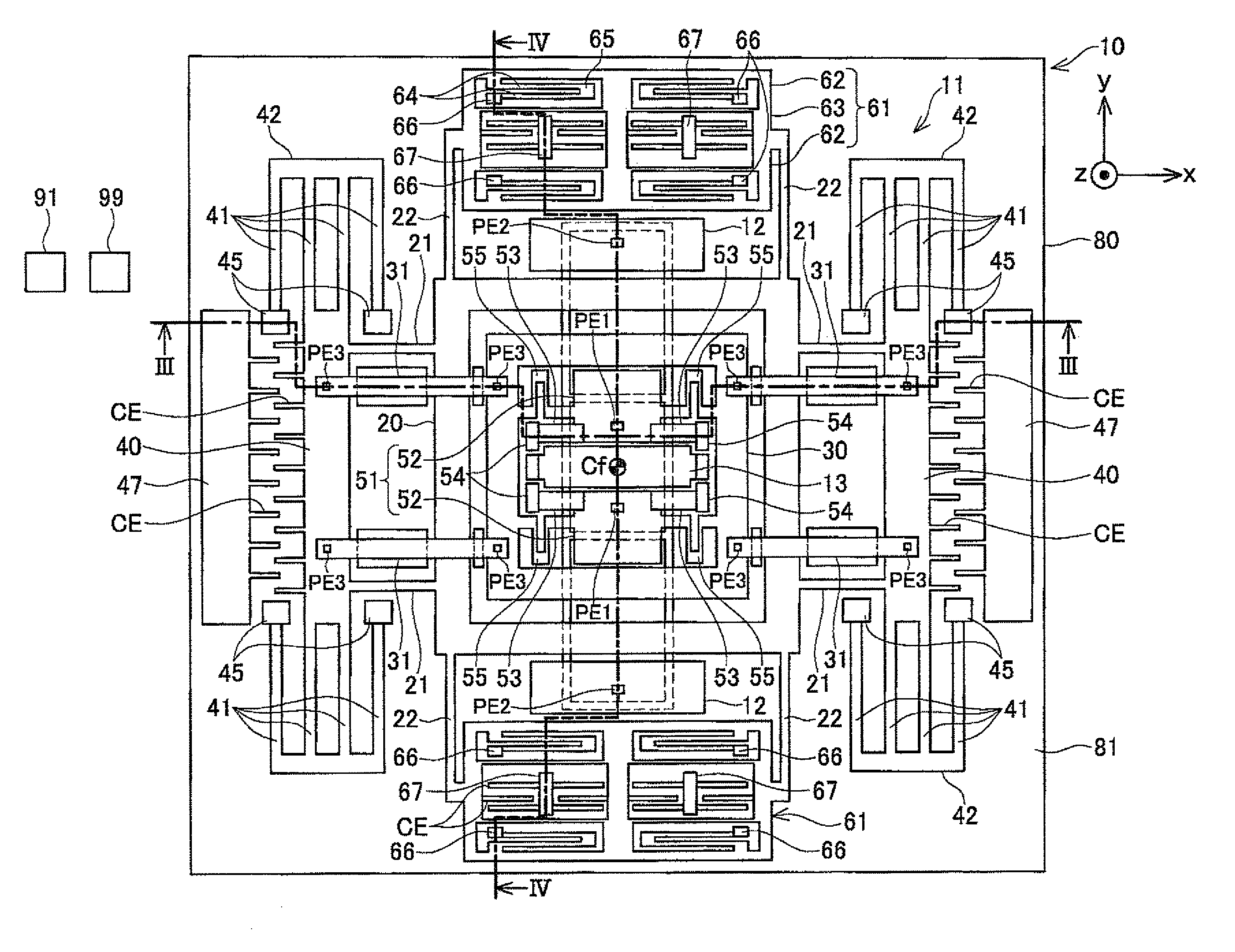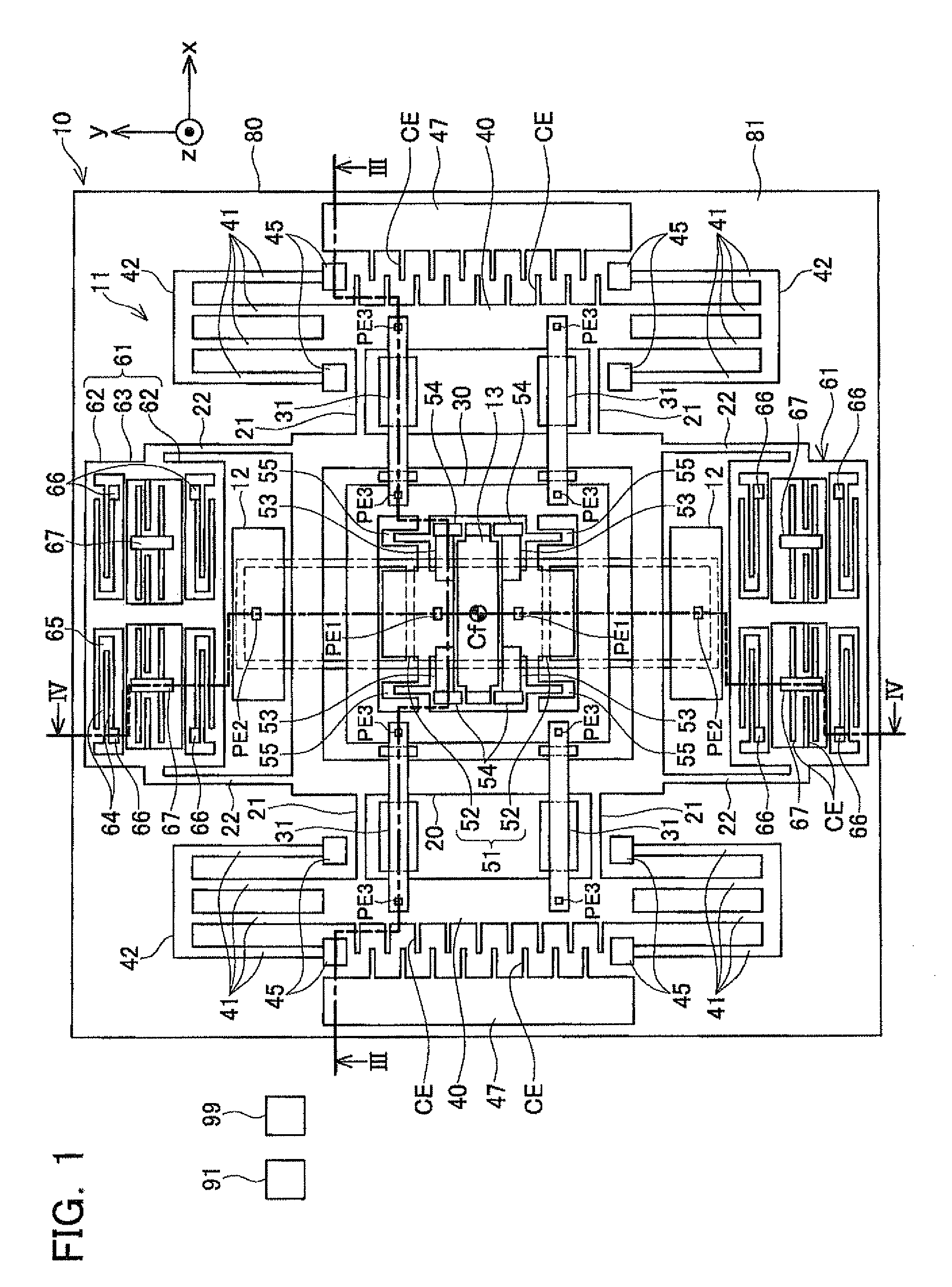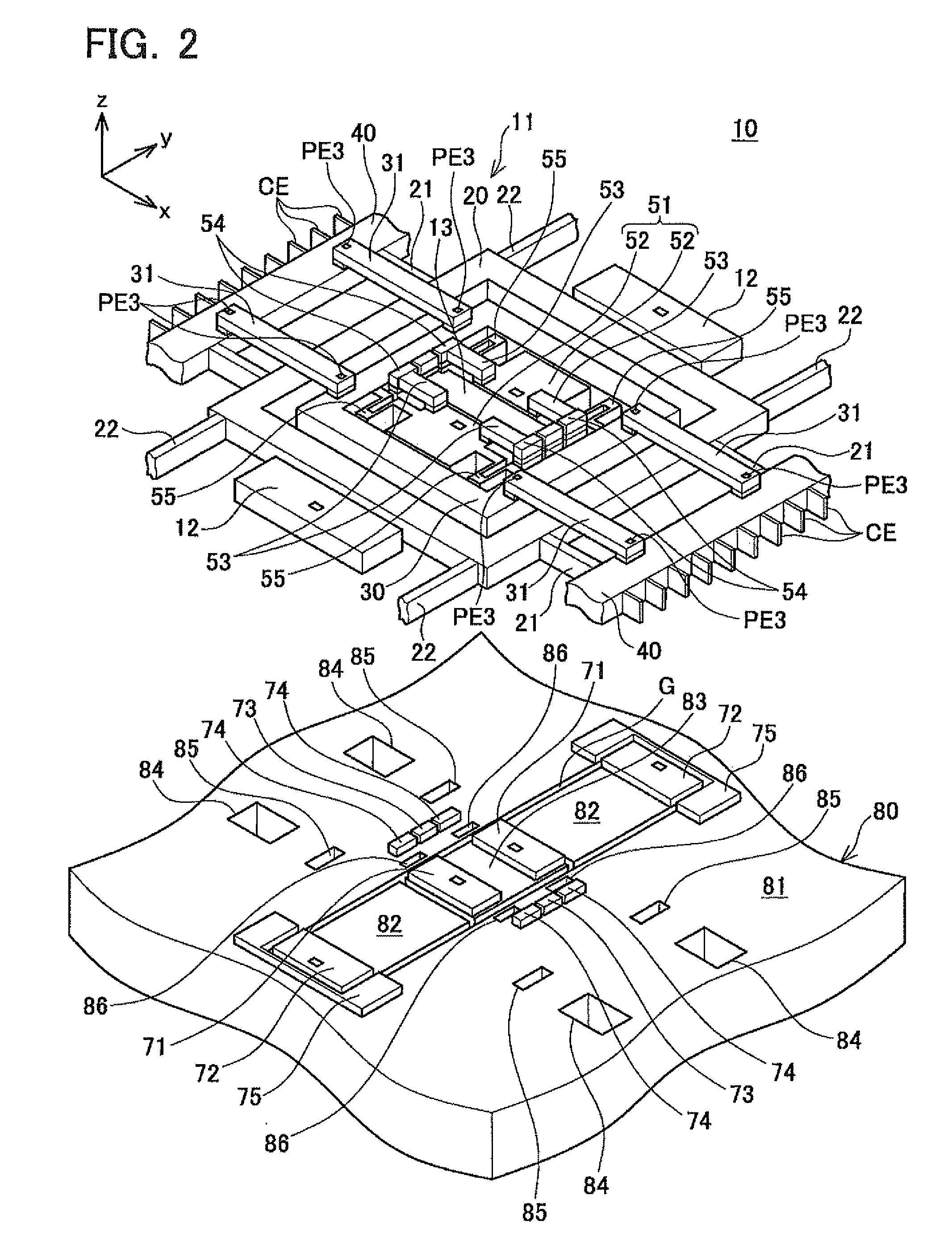Laminated structure provided with movable portion
a technology of laminated structure and movable portion, which is applied in the direction of acceleration measurement in multiple dimensions, turn-sensitive devices, instruments, etc., can solve the problems of reducing the number of movable structure able to be manufactured from a single substrate, reducing the number of structures, and increasing the number of structures. , the effect of reducing the manufacturing cost per structur
- Summary
- Abstract
- Description
- Claims
- Application Information
AI Technical Summary
Benefits of technology
Problems solved by technology
Method used
Image
Examples
embodiment 1
[0070]The following provides an explanation of Embodiment 1, in which a laminated structure according to the present invention is applied to a biaxial angular velocity sensor, with reference to FIGS. 1 to 4. A laminated structure 10 of the present embodiment is manufactured by etching a prescribed range of each layer of a double SOI substrate. The double SOI substrate used in the present embodiment has a five-layer structure, and is obtained by laminating in order starting from the top a silicon layer having a thickness of 5 μm (to be referred to as a first silicon layer), a silicon oxide layer having a thickness of 3 μm (to be referred to as a first oxide film), a silicon layer having a thickness of 15 μm (to be referred to as a second silicon layer), a silicon oxide layer having a thickness of 3 μm (to be referred to as a second oxide film), and a silicon layer having a thickness of 300 μm (to be referred to as a third silicon layer or substrate). The first silicon layer and the s...
embodiment 2
[0100]The following provides an explanation of an Embodiment 2 in which the laminated structure according to the present invention is applied to a triaxial acceleration sensor with reference to FIG. 5. As shown in FIG. 5, a laminated structure 100 of the present embodiment is obtained by etching a prescribed range of each layer of a double SOI substrate in the same manner as the previously described Embodiment 1. The laminated structure 100 of the present embodiment is provided with a movable structure 101 that differs from Embodiment 1. In the movable structure 101 of the present embodiment, together with being provided with two x relaying portions 110 shown in FIG. 5 instead of the two x relaying portions 40 of Embodiment 1, two x direction stationary electrodes 115 are provided instead of the excitation electrodes 47 of Embodiment 1. The laminated structure 100 is electrically connected to an x displacement output unit 103, the y displacement output unit 99 and the z displacement...
embodiment 3
[0105]The following provides an explanation of an Embodiment 3 in which the laminated structure according to the present invention is applied to a biaxial angular velocity sensor with reference to FIGS. 6 and 7. As shown in FIG. 6, a laminated structure 120 of the present embodiment is obtained by etching a specified range of each layer of a double SOI substrate in the same manner as each of the previously described embodiments. A biaxial angular velocity sensor is composed of this laminated structure 120, the y displacement output unit 99 and the z displacement output unit 91. The laminated structure 120 of the present embodiment is provided with a movable structure 121 that differs from Embodiment 1. The movable structure 121 is provided with four y-z springs 123 instead of the four first z springs 31 of Embodiment 1. As shown in FIG. 7, the openings 84 and 85 of Embodiment 1 are not formed in an outer substrate 126 of a substrate 125 since the first z springs 31 are not present i...
PUM
 Login to View More
Login to View More Abstract
Description
Claims
Application Information
 Login to View More
Login to View More - R&D
- Intellectual Property
- Life Sciences
- Materials
- Tech Scout
- Unparalleled Data Quality
- Higher Quality Content
- 60% Fewer Hallucinations
Browse by: Latest US Patents, China's latest patents, Technical Efficacy Thesaurus, Application Domain, Technology Topic, Popular Technical Reports.
© 2025 PatSnap. All rights reserved.Legal|Privacy policy|Modern Slavery Act Transparency Statement|Sitemap|About US| Contact US: help@patsnap.com



